Quick Answer
The best wines to pair with blue cheese are port, sherry, and sauternes. These sweet wines have enough acidity to counterbalance the salty and creamy flavors of blue cheese. Malbec and Cabernet Sauvignon are better suited for more aged cheeses like gorgonzola or Roquefort.
When it comes to indulging in a decadent cheese board, pairing it with the right wine is essential for an elevated gastronomic experience.
One of the most popular and exquisite combinations is blue cheese wine pairing, which brings out the unique flavors and textures of both the cheese and wine.
Blue cheese, with its bold and tangy taste, pairs exceptionally well with a variety of wines, from sweet to dry.
In this article, we will explore the best wine and blue cheese pairings, including Port, Sherry, Malbec, Cabernet Sauvignon, Sauternes, Chardonnay, and Prosecco, as well as additional tips for experimenting with and perfecting your own blue cheese wine pairing.
So, what wine goes with blue cheese?
The best wines to pair with blue cheese are sweet dessert wines like Port, Sherry, and Sauternes. Malbec and Cabernet Sauvignon also work well as they have a bold flavor that can stand up to the pungent taste of blue cheese.
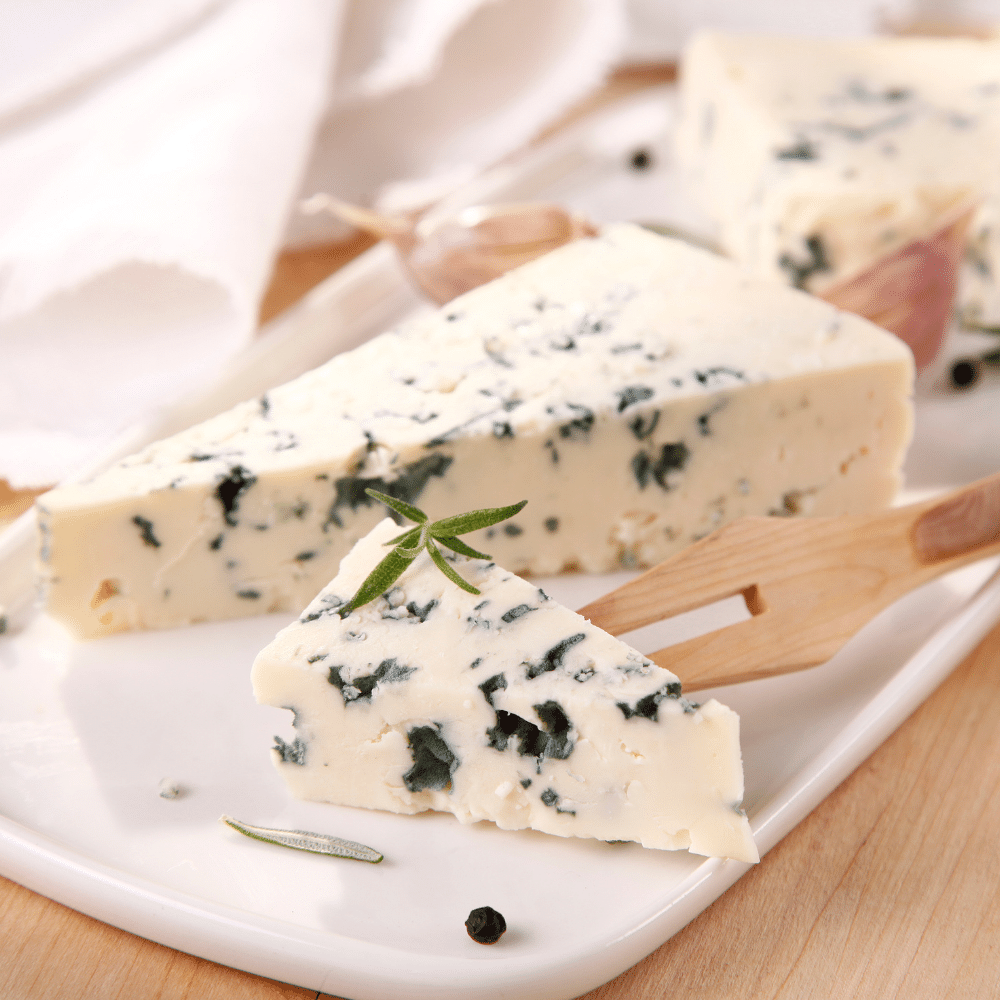
The Best Wine and Blue Cheese Pairings
Blue cheese is a wonderful addition to many dishes, and it pairs well with various types of wines.
If you’re looking for the perfect pairing, here are the best wines that will bring out the flavors in blue cheese:
1. Port
Port is a fortified wine that originates from the Douro Valley in Portugal. It is typically a sweet red wine that is high in alcohol content and has a rich, velvety texture.
When paired with blue cheese, Port’s sweetness, and bold flavors complement the sharp and tangy flavors of the cheese, creating a perfect balance of flavors.
There are several types of Port, but the two main styles that pair well with blue cheese are Ruby and Tawny Port.
- Ruby Port is a young, full-bodied wine with a deep red color and intense fruity flavors. It pairs well with creamy and mild blue cheeses, such as Gorgonzola or Cambozola.
- Tawny Port is an aged wine that has a nutty flavor and a lighter color than Ruby Port. It pairs well with nutty and strong blue cheeses, such as Roquefort or Stilton.
When serving Port with blue cheese, it’s best to serve the wine at room temperature or slightly chilled. The combination of Port and blue cheese is perfect for a dessert course or a cheese board. The sweetness of the wine and the tanginess of the cheese create a harmonious and unforgettable flavor experience.
2. Sherry
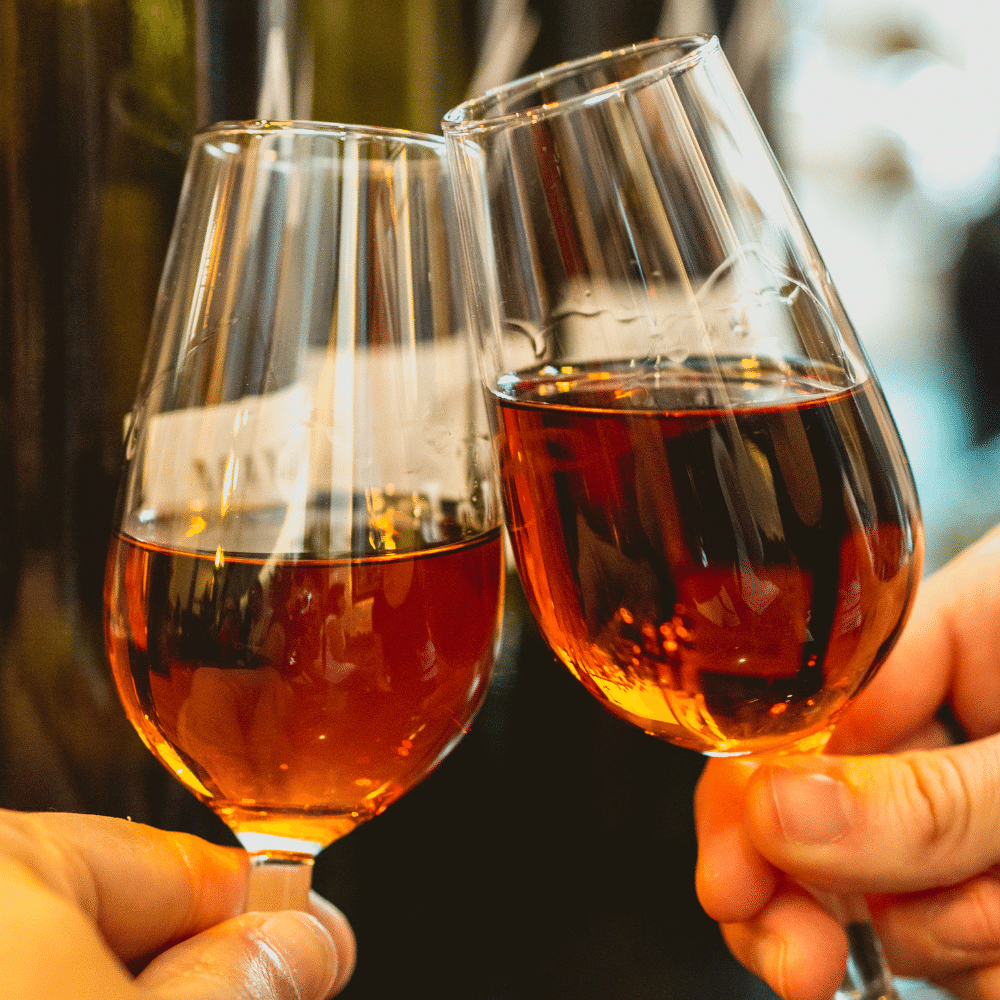
Sherry is a fortified wine that comes from the Andalusia region of Spain. It is a versatile wine that comes in a variety of styles, ranging from dry to sweet. When it comes to blue cheese wine pairing, Oloroso and Amontillado styles of Sherry work particularly well.
- Oloroso Sherry is a rich, full-bodied wine with a deep amber color and a nutty, savory flavor. It pairs well with pungent and salty blue cheeses, such as Roquefort or Gorgonzola.
- Amontillado Sherry is a dry wine that has a lighter color than Oloroso, with a delicate flavor that ranges from nutty to slightly sweet. It pairs well with mild and creamy blue cheeses, such as Cambozola or Blue Castello.
Sherry’s unique nutty, savory flavors complement the salty, tangy taste of blue cheese, making it a popular choice for pairing. It’s best to serve Sherry slightly chilled, and it pairs well with a variety of blue cheeses on a cheese board. The combination of Sherry and blue cheese is an elegant and sophisticated pairing that’s perfect for entertaining.
3. Malbec
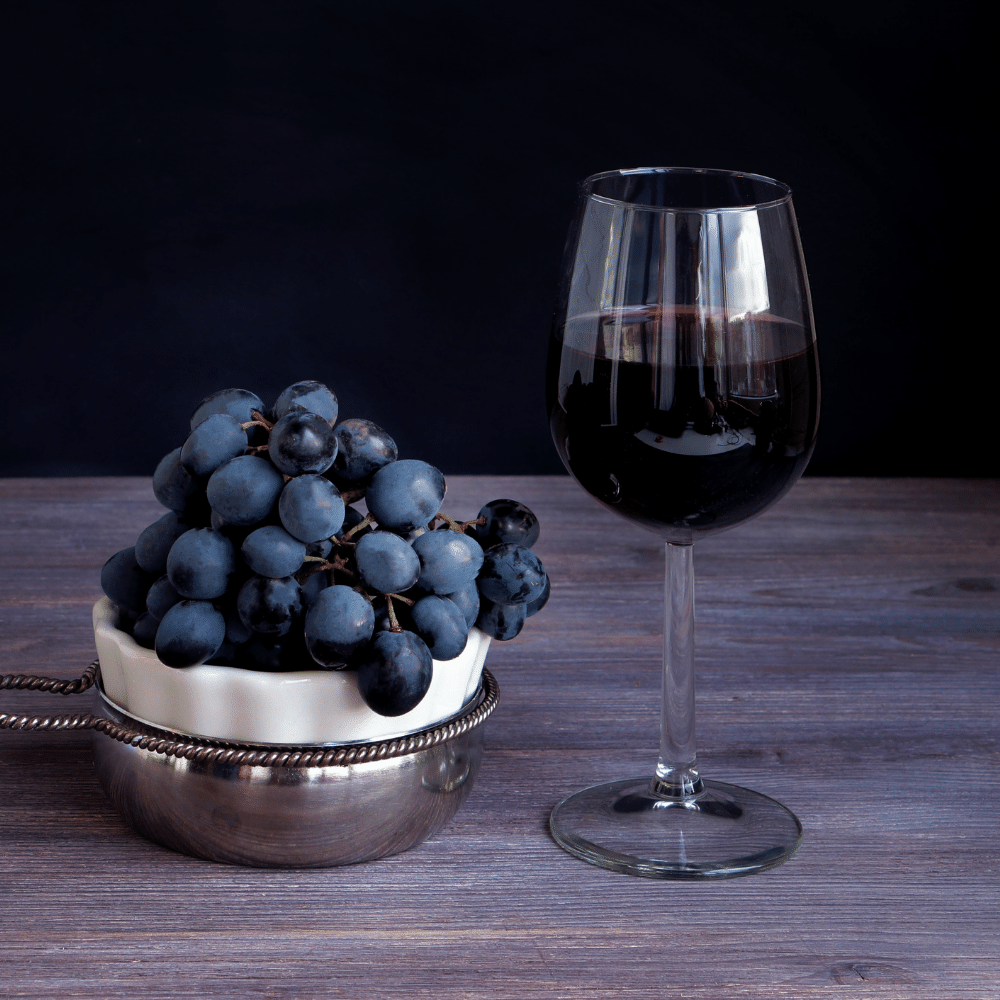
Malbec is a full-bodied red wine that originated in France but is now primarily produced in Argentina. It has a deep, dark color and a rich flavor that pairs well with the strong flavors of blue cheese.
When pairing Malbec with blue cheese, it’s important to choose a cheese that can stand up to the bold flavors of the wine. Some blue cheeses that pair well with Malbec include Cabrales, Bleu d’Auvergne, and Roquefort.
The tannins in Malbec help cut through the creaminess of the cheese, while the cheese’s pungent taste brings out the fruity notes of the wine. This creates a perfect balance of flavors that make for a memorable pairing.
Malbec is best served at room temperature and pairs well with blue cheese on a cheese board or with a meaty dish, such as steak or lamb. The combination of Malbec and blue cheese is a bold and luxurious pairing that’s perfect for special occasions or a cozy night in.
4. Cabernet Sauvignon

Cabernet Sauvignon is a full-bodied red wine that is one of the most popular and well-known wine varieties. It has a high tannin content and a deep, rich flavor that pairs well with the strong flavors of blue cheese.
When pairing Cabernet Sauvignon with blue cheese, it’s important to choose a cheese that can stand up to the bold flavors of the wine. Some blue cheeses that pair well with Cabernet Sauvignon include Stilton, Gorgonzola, and Maytag Blue.
The tannins in Cabernet Sauvignon help cut through the creaminess of the cheese, while the cheese’s pungent taste brings out the fruity notes of the wine. This creates a perfect balance of flavors that make for a memorable pairing.
Cabernet Sauvignon is best served at room temperature and pairs well with blue cheese on a cheese board or with a hearty meal, such as a beef stew or a grilled steak. The combination of Cabernet Sauvignon and blue cheese is a classic and sophisticated pairing that’s perfect for impressing guests or treating yourself to a special indulgence.
5. Sauternes

Sauternes is a sweet white wine that comes from the Bordeaux region of France. It is made from grapes that have been affected by a fungus called Botrytis cinerea, which gives the wine its unique and complex flavors.
When paired with blue cheese, Sauternes’ sweetness and acidity complement the tangy and salty flavors of the cheese, creating a perfect balance of flavors.
Some blue cheeses that pair well with Sauternes include Roquefort, Stilton, and Bleu d’Auvergne. These cheeses have a strong and pungent taste that can stand up to the sweetness of the wine.
Sauternes is best served chilled and pairs well with blue cheese as a dessert course or on a cheese board. The combination of Sauternes and blue cheese is a luxurious and indulgent pairing that’s perfect for special occasions or for treating yourself to a decadent treat.
6. Chardonnay

Chardonnay is a full-bodied white wine that is known for its buttery and oaky flavors. It pairs well with blue cheese due to its rich and complex flavor profile that complements the tangy and salty taste of the cheese.
When pairing Chardonnay with blue cheese, it’s important to choose a cheese that can stand up to the bold flavors of the wine. Some blue cheeses that pair well with Chardonnay include Cambozola, Blue Castello, and Fourme d’Ambert.
The buttery and oaky flavors of Chardonnay help cut through the creaminess of the cheese, while the cheese’s pungent taste brings out the fruity notes of the wine. This creates a perfect balance of flavors that make for a memorable pairing.
Chardonnay is best served chilled and pairs well with blue cheese on a cheese board or with seafood dishes, such as crab cakes or grilled shrimp. The combination of Chardonnay and blue cheese is a rich and elegant pairing that’s perfect for sophisticated gatherings or for indulging in a gourmet snack.
7. Prosecco
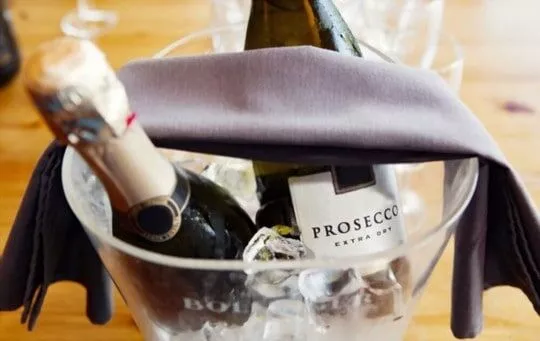
Prosecco is a sparkling wine that comes from the Veneto region of Italy. It is light, crisp, and refreshing, with fruity and floral notes. It pairs well with blue cheese due to its acidity and effervescence, which help cut through the richness of the cheese.
When pairing Prosecco with blue cheese, it’s important to choose a cheese that can stand up to the bold flavors of the wine. Some blue cheeses that pair well with Prosecco include Gorgonzola, Stilton, and Fourme d’Ambert.
The acidity and effervescence of Prosecco help cleanse the palate between bites of cheese, while the cheese’s pungent taste brings out the fruity notes of the wine. This creates a perfect balance of flavors that make for a light and refreshing pairing.
Prosecco is best served chilled and pairs well with blue cheese as an aperitif or on a cheese board. The combination of Prosecco and blue cheese is a fun and playful pairing that’s perfect for casual gatherings or for enjoying a relaxed evening at home.
8. Pinot Noir

Pinot Noir is a light-bodied red wine that is known for its fruity and earthy flavors. It pairs well with blue cheese due to its acidity and tannins that cut through the richness of the cheese.
When pairing Pinot Noir with blue cheese, it’s important to choose a cheese that can stand up to the bold flavors of the wine. Some blue cheeses that pair well with Pinot Noir include Maytag Blue, Roquefort, and Gorgonzola.
The acidity and tannins of Pinot Noir help balance the creaminess and saltiness of the cheese, while the cheese’s pungent taste brings out the fruity and earthy notes of the wine. This creates a perfect balance of flavors that make for a memorable pairing.
Pinot Noir is best served at slightly below room temperature and pairs well with blue cheese as an appetizer or on a cheese board. The combination of Pinot Noir and blue cheese is a sophisticated and complex pairing that’s perfect for impressing guests or indulging in a special treat.
9. Syrah/Shiraz

Syrah/Shiraz is a full-bodied red wine that is known for its bold and spicy flavors. It pairs well with blue cheese due to its rich and full-bodied texture that complements the strong flavors of the cheese.
When pairing Syrah/Shiraz with blue cheese, it’s important to choose a cheese that can stand up to the bold flavors of the wine. Some blue cheeses that pair well with Syrah/Shiraz include Bleu d’Auvergne, Fourme d’Ambert, and Stilton.
The rich and full-bodied texture of Syrah/Shiraz helps balance the creaminess and saltiness of the cheese, while the cheese’s pungent taste brings out the bold and spicy notes of the wine. This creates a perfect balance of flavors that make for a memorable pairing.
Syrah/Shiraz is best served at room temperature and pairs well with blue cheese as a dessert course or on a cheese board. The combination of Syrah/Shiraz and blue cheese is a bold and luxurious pairing that’s perfect for special occasions or for indulging in a gourmet snack.
Additional Blue Cheese and Wine Pairing Tips
- Consider the intensity of the blue cheese and wine – Pairing a bold and intense blue cheese with a delicate and light-bodied wine may result in the wine being overpowered by the cheese. Similarly, pairing a heavy and full-bodied wine with a mild and creamy blue cheese may not bring out the best flavors of the wine. It’s important to choose a wine and blue cheese that complement each other’s intensity.
- Pair wines and cheeses from the same region – Wines and cheeses from the same region often have a natural affinity for each other. For example, Roquefort cheese from France pairs well with red wines from the Rhone region, while Gorgonzola cheese from Italy pairs well with Italian red wines such as Chianti.
- Experiment with different combinations – Blue cheese and wine pairing is subjective and personal, so don’t be afraid to experiment with different combinations to find your perfect match. Try pairing a wine that you wouldn’t typically associate with blue cheese to discover new and unexpected flavors.
- Consider the texture of the cheese – Blue cheese comes in a variety of textures, from crumbly to creamy. The texture of the cheese can affect how it pairs with wine. For example, creamy blue cheese pairs well with full-bodied red wines, while crumbly blue cheese pairs well with sweet white wines.
- Serve the wine and cheese at the right temperature – Serving wine and cheese at the right temperature can enhance the flavors and aromas of both. White wines and sparkling wines should be served chilled, while red wines should be served at room temperature. Blue cheese should be served at room temperature to allow its flavors to develop fully.
Types of Blue Cheese
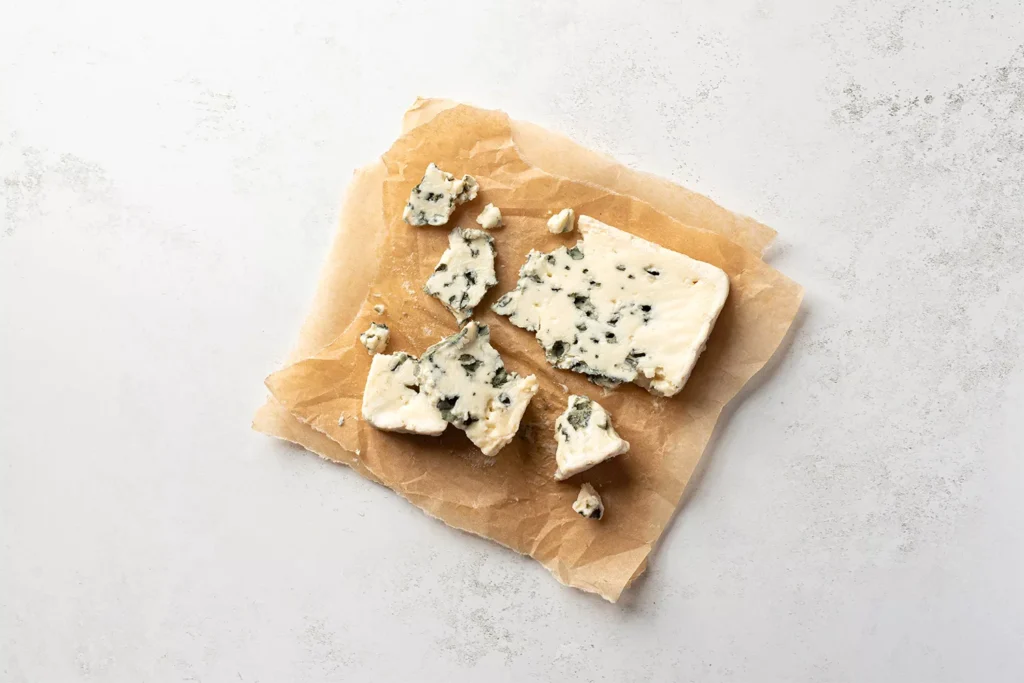
Blue cheese comes in a variety of textures and flavors, each with its unique characteristics that can affect how it pairs with wine.
Here are some of the most popular types of blue cheese:
- Roquefort – This French blue cheese is made from sheep’s milk and has a rich, tangy flavor with a crumbly texture. It pairs well with sweet white wines, such as Sauternes or Port.
- Gorgonzola – This Italian blue cheese is made from cow’s milk and has a creamy texture with a sharp and tangy flavor. It pairs well with full-bodied red wines, such as Cabernet Sauvignon or Syrah.
- Stilton – This English blue cheese is made from cow’s milk and has a crumbly texture with a bold and pungent flavor. It pairs well with sweet white wines, such as Sauternes or Port.
- Maytag Blue – This American blue cheese is made from cow’s milk and has a tangy and nutty flavor with a creamy texture. It pairs well with Pinot Noir or Cabernet Sauvignon.
- Bleu d’Auvergne – This French blue cheese is made from cow’s milk and has a creamy texture with a strong and spicy flavor. It pairs well with Syrah or Chardonnay.
- Fourme d’Ambert – This French blue cheese is made from cow’s milk and has a nutty and sweet flavor with a creamy texture. It pairs well with Syrah or Shiraz.
By exploring the different types of blue cheese and their unique characteristics, you can discover new and exciting wine pairings that complement the flavors of each cheese.
Serving and Storage Tips
To ensure that your blue cheese and wine pairing is at its best, it’s important to consider how you serve and store the cheese and wine.
Serving Tips:
- Cheese should be served at room temperature to allow its flavors to develop fully.
- Wine should be served at the correct temperature to enhance its flavors and aromas.
- Pair blue cheese with other foods that complement its flavor, such as nuts, fruit, or crackers.
- Provide a separate knife for each cheese to prevent mixing flavors.
Storage Tips:
- Blue cheese should be stored in a cool, dark place to prevent it from drying out or developing mold.
- Wrap cheese in wax paper or parchment paper to allow it to breathe.
- Store wine in a cool, dark place to prevent it from spoiling or losing its flavor.
- Once a bottle of wine has been opened, it should be stored in the refrigerator and consumed within a few days to preserve its freshness.
Food Pairings
In addition to wine, blue cheese pairs well with a variety of foods, including:
- Fruits – Blue cheese pairs well with a variety of fruits, such as grapes, apples, pears, and figs. The sweetness and acidity of the fruits complement the tangy and salty taste of the cheese.
- Nuts – Blue cheese pairs well with nuts, such as walnuts, almonds, and pecans. The nutty flavors of the nuts complement the rich and creamy texture of the cheese.
- Meat – Blue cheese pairs well with meat, such as steak, lamb, and bacon. The savory and salty flavors of the meat complement the tangy and pungent taste of the cheese.
- Vegetables – Blue cheese pairs well with vegetables, such as roasted beets, broccoli, and cauliflower. The earthy flavors of the vegetables complement the bold and tangy taste of the cheese.
- Bread and crackers – Blue cheese pairs well with a variety of bread and crackers, such as baguette, crostini, and water crackers. The crunchy texture of the bread and crackers provides a contrast to the creamy texture of the cheese.
Experimentation and Personal Preference
While there are some general guidelines for pairing blue cheese with wine and food, ultimately, the best pairings depend on personal preference and experimentation. Everyone’s taste buds are different, and what one person finds to be a perfect pairing might not work for someone else.
To find the perfect blue cheese and wine pairing for you, it’s important to experiment with different combinations and trust your taste buds. Don’t be afraid to try something new or unexpected, as you might discover a flavor pairing that you never thought would work but ends up being amazing.
You can also ask for recommendations from wine experts, cheese mongers, or restaurant servers who have experience with blue cheese and wine pairings. They can offer suggestions based on your preferences and help guide you toward combinations that you might not have considered.
At the end of the day, the most important thing is to enjoy the experience of pairing blue cheese with wine and food. Whether you’re indulging in a luxurious treat or simply snacking on some cheese and crackers, savor the flavors and enjoy the moment.
Conclusion
In conclusion, pairing blue cheese with wine is an art form that can enhance your dining experience and impress your guests. Whether you prefer bold and spicy red wines or sweet and fruity white wines, there is a blue cheese out there that will complement your wine perfectly.
So, what wine pairs well with blue cheese?
The best wines to pair with blue cheese are Port, Sherry, Malbec, Cabernet Sauvignon, and Sauternes. These wines have enough sweetness to cut through the strong flavor of the cheese. Sweet dessert wines such as Tokaji and ice wine also work well.
By considering the intensity, texture, and flavor profile of both the wine and cheese, you can create a perfect balance of flavors that bring out the best in each other. Experimenting with different combinations, pairing wines and cheeses from the same region, and considering the serving and storage tips can also help you find your perfect pairing.
But ultimately, the best blue cheese and wine pairing is the one that you enjoy the most. Trust your taste buds, and don’t be afraid to try something new or unexpected. With a little bit of experimentation and a lot of personal preference, you can create your own perfect blue cheese and wine pairings that are tailored to your taste preferences.
Jenny has always been passionate about cooking, and she uses her platform to share her joy of food with others. Her recipes are easy to follow, and she loves giving tips and tricks to help others create their own unique culinary creations.

